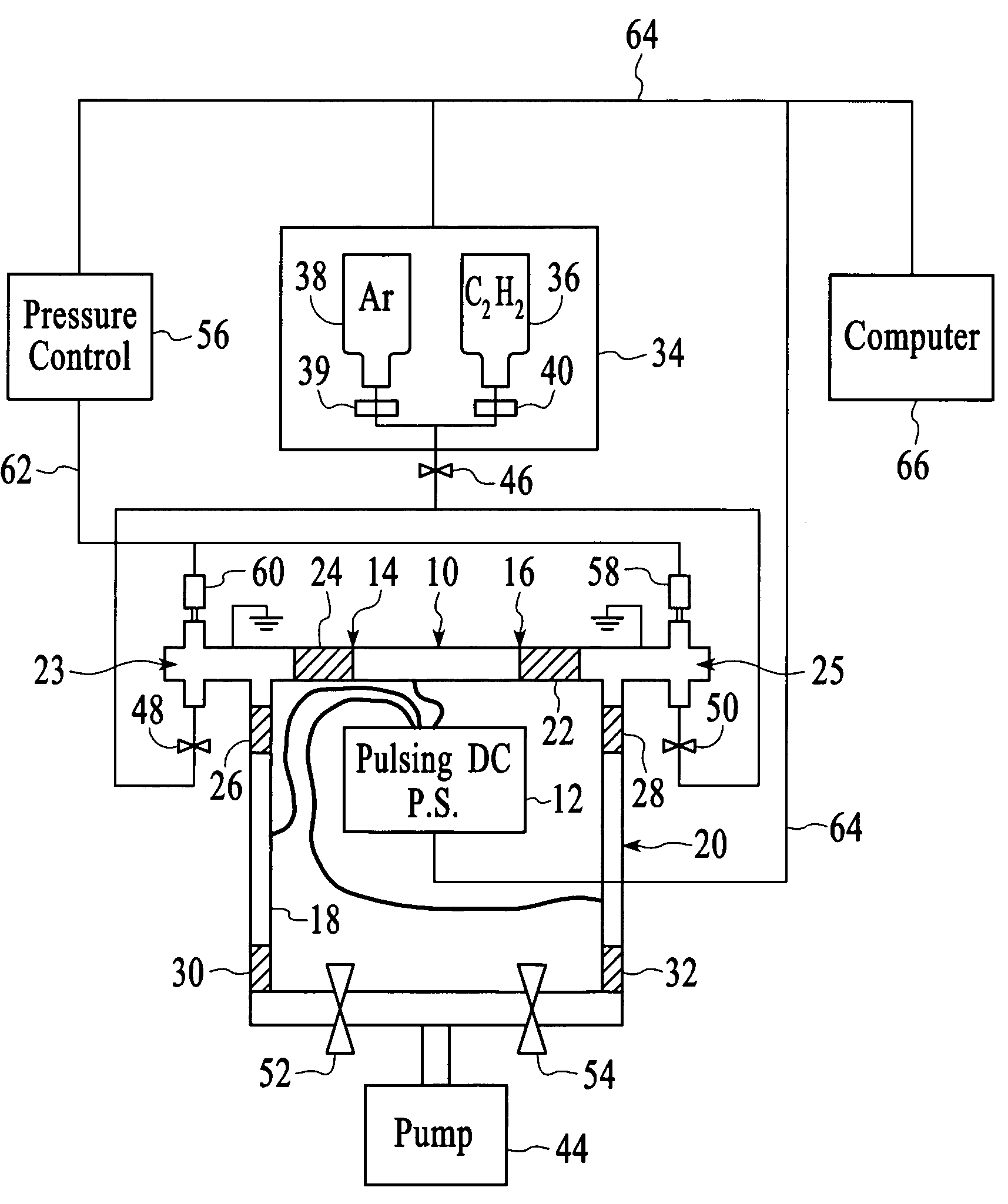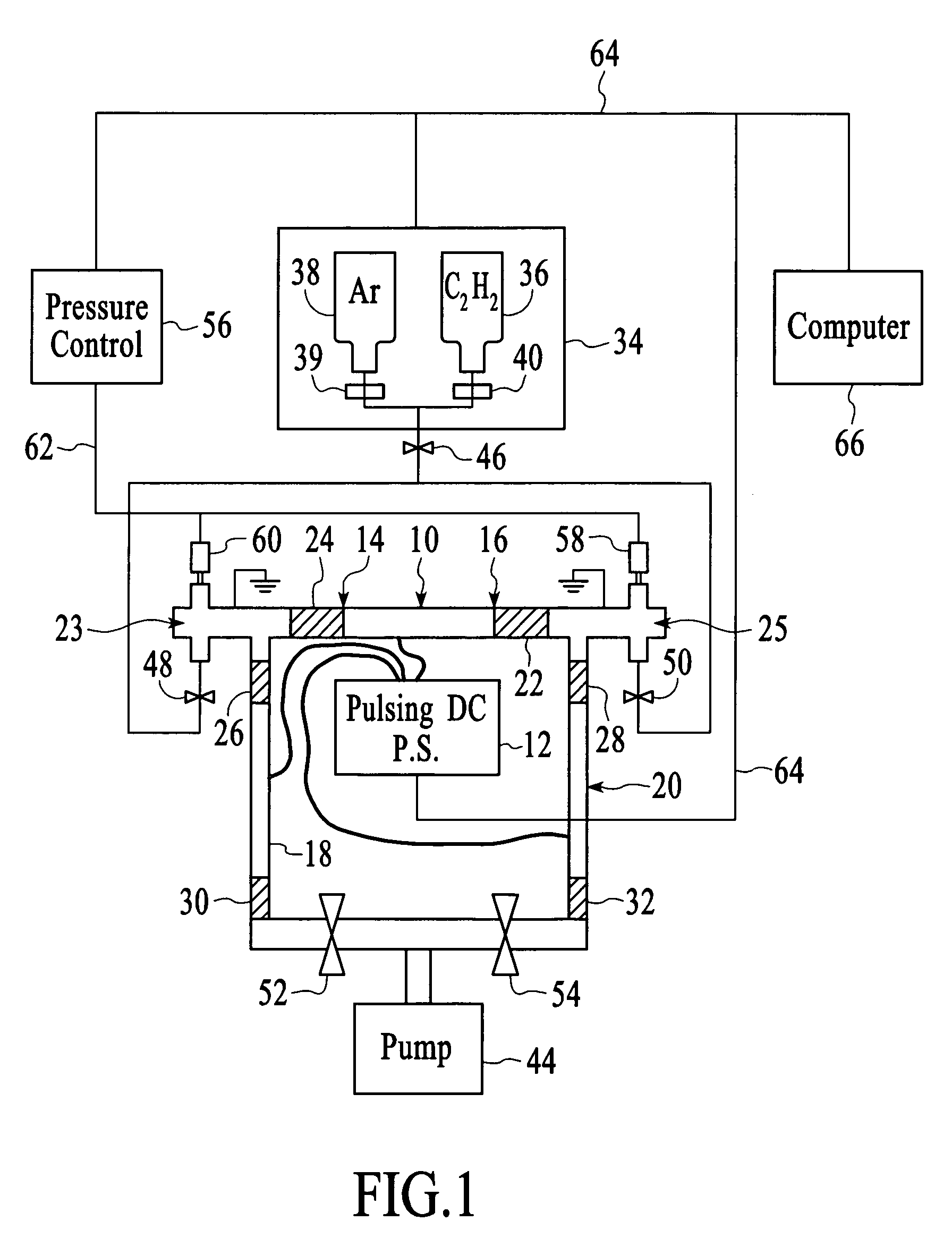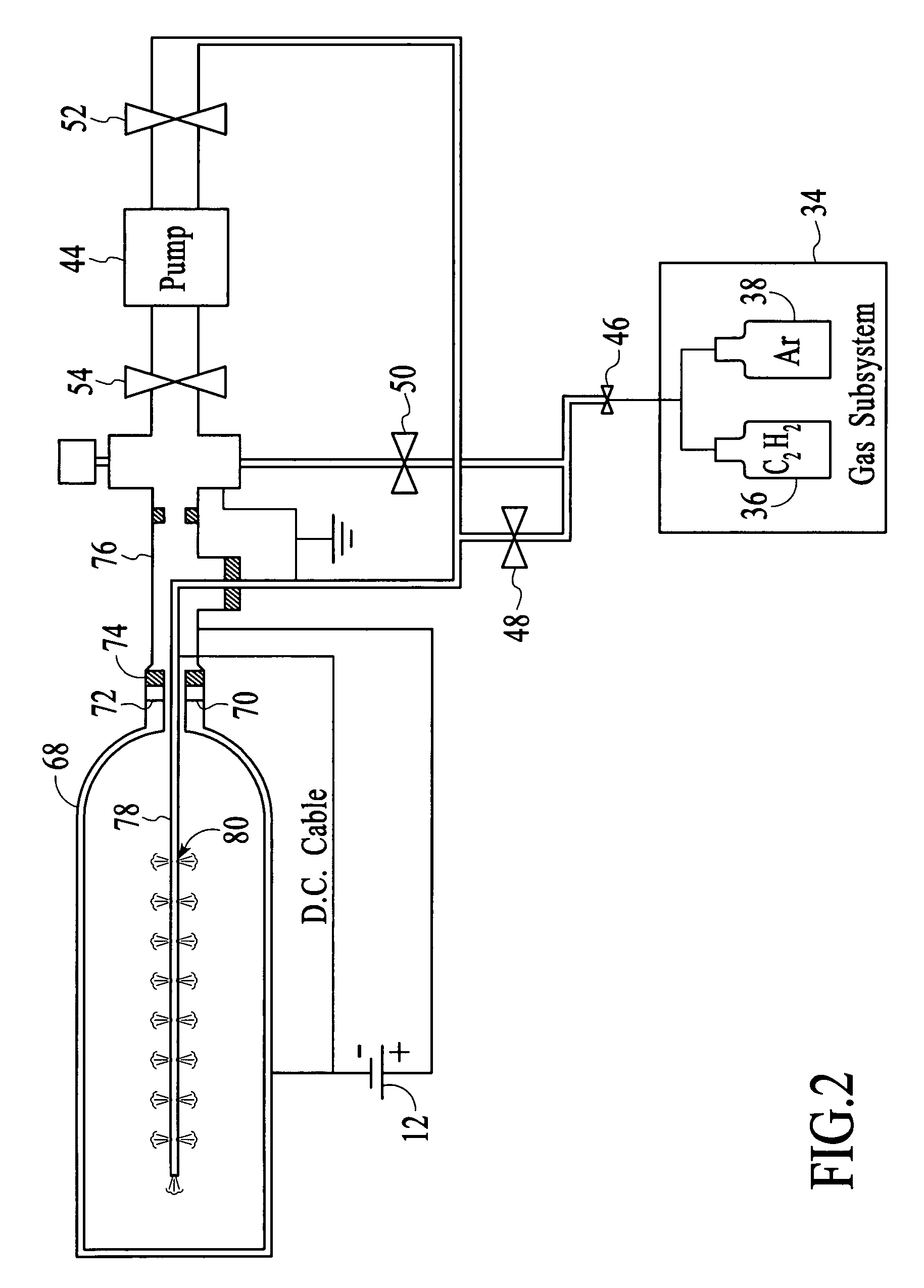Method and system for coating internal surfaces using reverse-flow cycling
a technology of reverse-flow cycling and internal surfaces, applied in the direction of solid-state diffusion coating, plasma technique, coating, etc., can solve the problem that thermal techniques cannot be used for substrates that are not heat-sensitive, and achieve the effect of providing uniform coating and efficiently coating workpieces
- Summary
- Abstract
- Description
- Claims
- Application Information
AI Technical Summary
Benefits of technology
Problems solved by technology
Method used
Image
Examples
Embodiment Construction
[0025]With reference to FIG. 1, a conductive pipe or “workpiece”10 is connected to a pulsed DC power supply 12, which applies a pulsed negative bias. This negative bias is used to (a) create a plasma between a cathode and an anode, (b) draw an ionized reactive gas to the surfaces to be coated, (c) allow ion bombardment of the film to improve film properties such as density and stress levels, and (d) allow control of uniformity by adjusting the duty cycle so as to permit replenishment of a source gas and depletion of surface charges resulting from the coating process during the “off” portion of the cycle. Here, the workpiece 10 functions as a cathode while anodes 18 and 20 are connected to the positive side of the pulsed DC supply. Gas reservoirs 23 and 25 are coupled to each end of the workpiece. In this embodiment, they are electrically isolated from the workpiece and grounded. In other embodiments, they can be biased as a cathode or allowed to float with the anodes grounded. Press...
PUM
| Property | Measurement | Unit |
|---|---|---|
| pressure | aaaaa | aaaaa |
| pressure | aaaaa | aaaaa |
| diameter | aaaaa | aaaaa |
Abstract
Description
Claims
Application Information
 Login to View More
Login to View More - R&D
- Intellectual Property
- Life Sciences
- Materials
- Tech Scout
- Unparalleled Data Quality
- Higher Quality Content
- 60% Fewer Hallucinations
Browse by: Latest US Patents, China's latest patents, Technical Efficacy Thesaurus, Application Domain, Technology Topic, Popular Technical Reports.
© 2025 PatSnap. All rights reserved.Legal|Privacy policy|Modern Slavery Act Transparency Statement|Sitemap|About US| Contact US: help@patsnap.com



